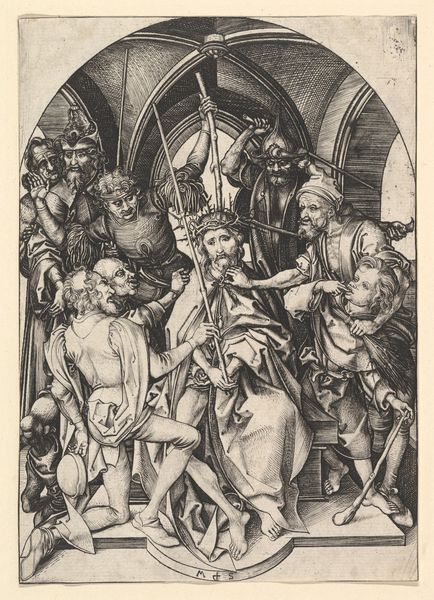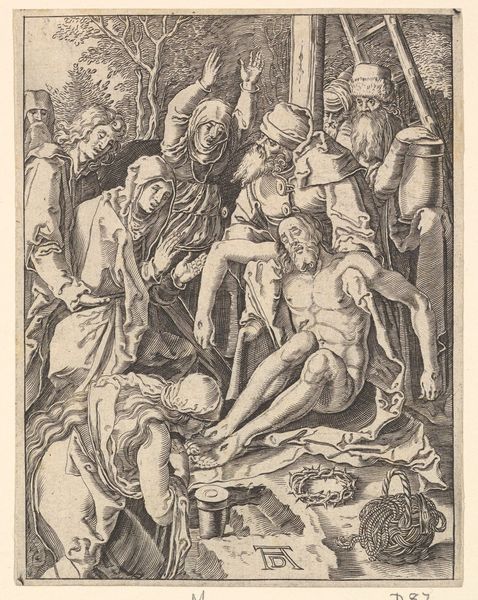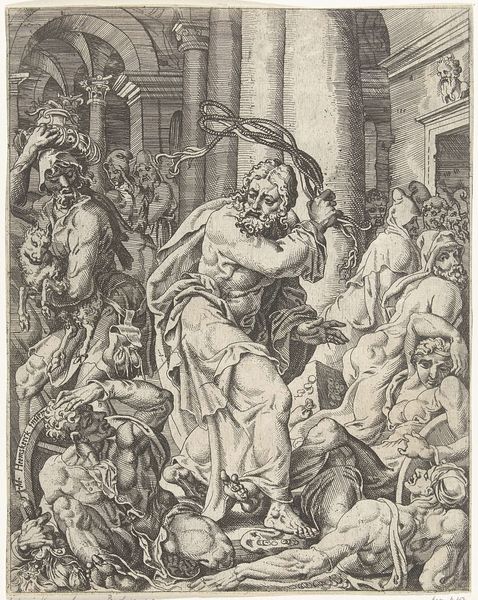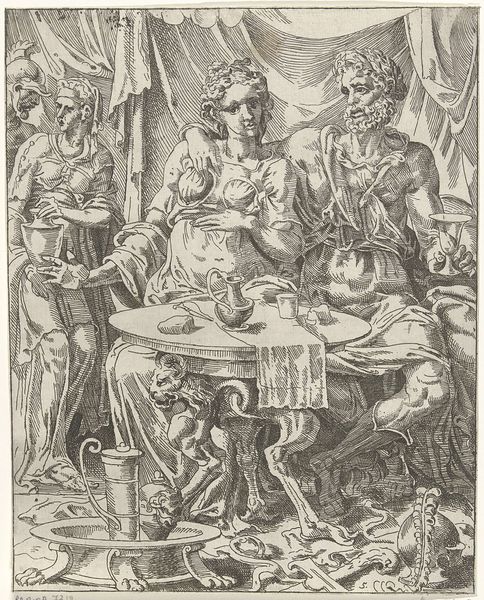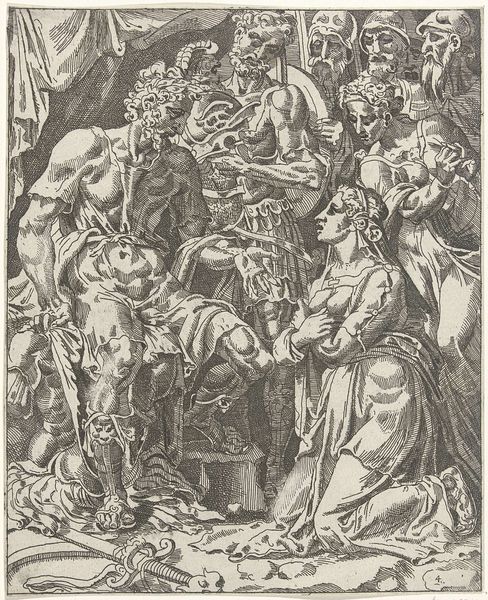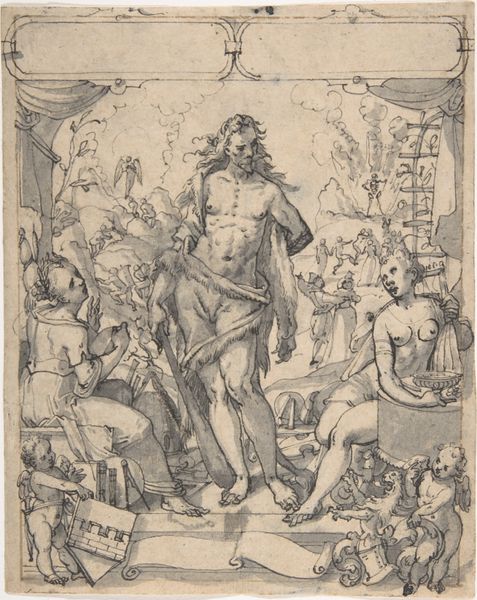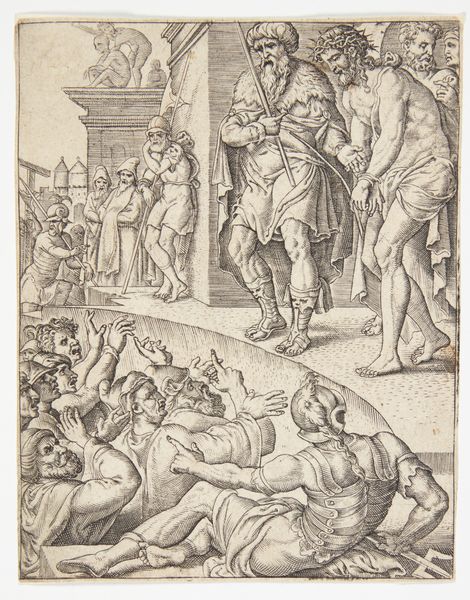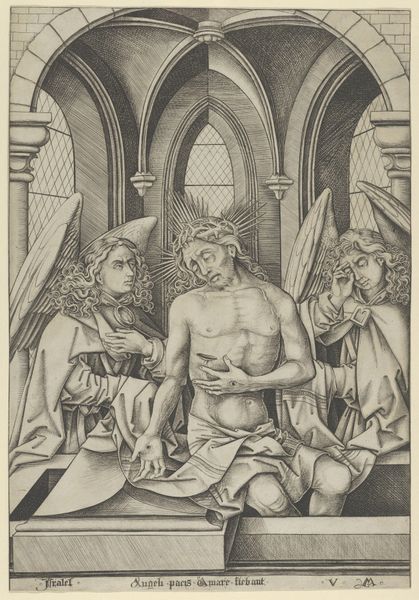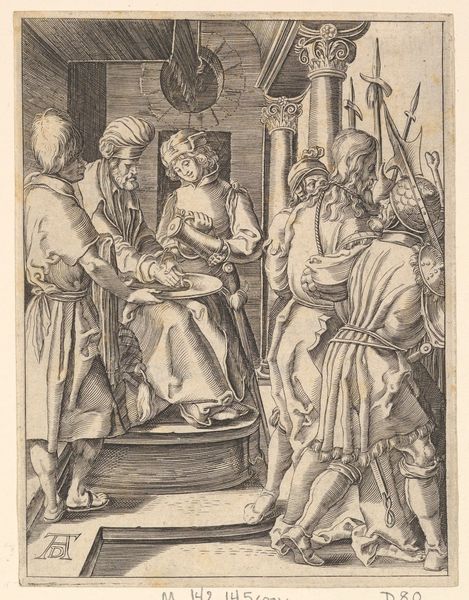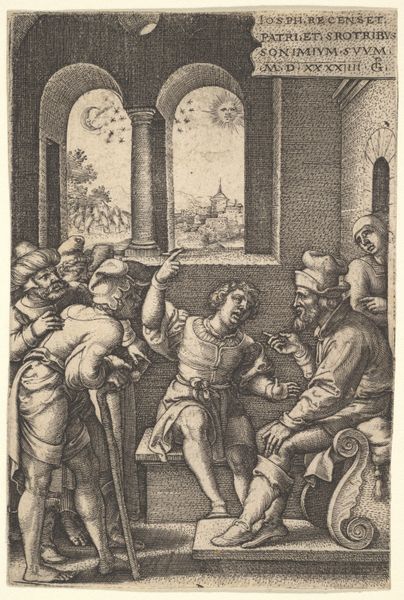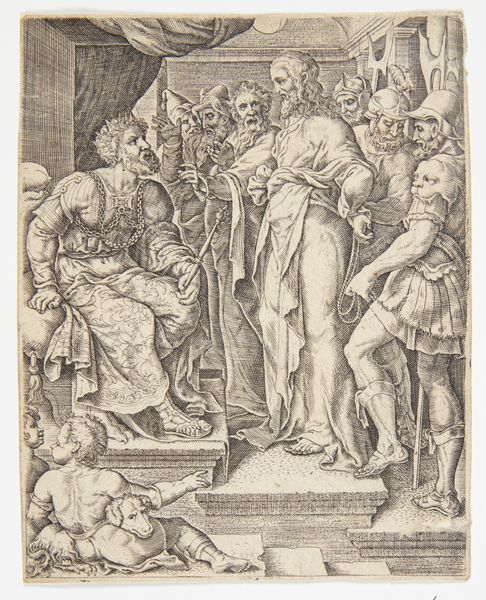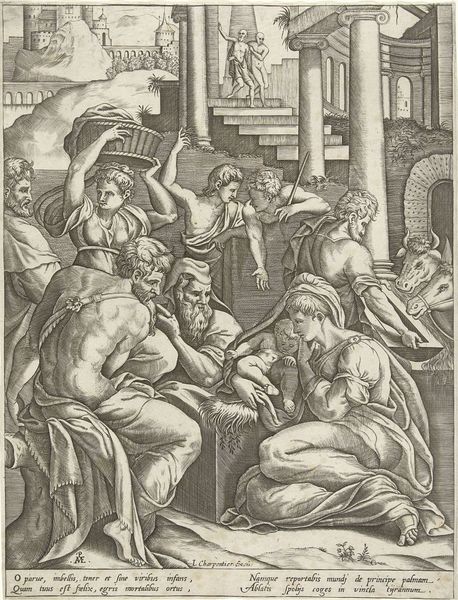
drawing, ink, engraving
#
drawing
#
baroque
#
pen drawing
#
pen illustration
#
pen sketch
#
figuration
#
ink
#
pen-ink sketch
#
pen work
#
history-painting
#
engraving
Dimensions: height 162 mm, width 131 mm
Copyright: Rijks Museum: Open Domain
Editor: Here we have "Christus met de doornekroon" - Christ with the Crown of Thorns - a pen and ink drawing created in 1614 by Pieter Feddes van Harlingen. It's a rather small piece, and the detail is just incredible. The mood is quite somber and oppressive. What do you see in this piece, looking at it through the lens of iconography? Curator: This piece vibrates with symbolic tension. Consider the crown of thorns itself – a brutal parody of royal authority. It’s placed upon Christ, but it doesn’t signify earthly power. Rather, it underscores a different kind of sovereignty: one achieved through suffering. The artist wants you to contrast this with all the regal imagery – the lion’s head and other decorative armors - so gaudy, and empty. Note how this contrasts the radiant halo of divinity with the imposed, lacerating crown. The placement of the figures, too, suggests a careful balance, no? What do you feel when regarding their positioning around Christ? Editor: It feels almost claustrophobic. They're pressing in on him. There is so much ornamental dress that is obscuring what’s inside. It feels quite intentional, as if it is symbolic for a stifling sense of power. Curator: Precisely! Think about the psychological weight such imagery carried in 17th century Europe. Religious conflict was rampant. Images were tools of persuasion and powerful memory aids, capable of reinforcing or challenging doctrines through visual symbolism. Van Harlingen's Christ is deliberately framed against such symbols. The artist thus creates a work speaking beyond simple representation, yes? Editor: So, the symbols become a sort of visual language in themselves, carrying layers of meaning beyond just the literal depiction. That’s interesting. It almost sounds like early propaganda, using cultural symbols to convey a message. Curator: Indeed! The "message" would resound differently based on one's cultural context, wouldn't it? Symbols activate memory; it's all connected. Editor: This has definitely given me a new appreciation for how artists used symbolism to communicate complex ideas. Thank you. Curator: And thank you for bringing such astute observations. It truly enriched our understanding, no?
Comments
No comments
Be the first to comment and join the conversation on the ultimate creative platform.


